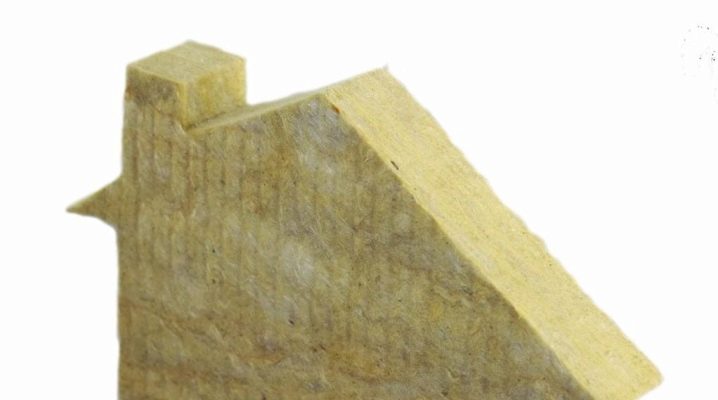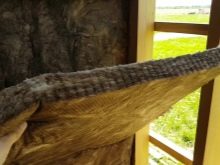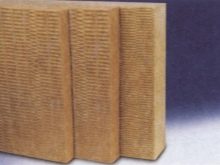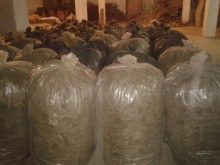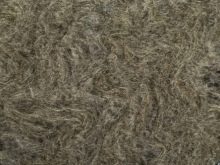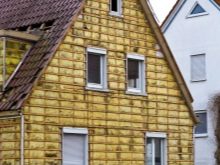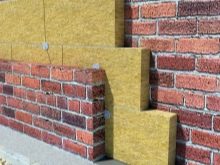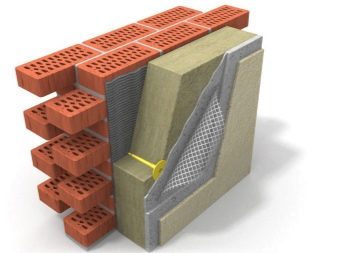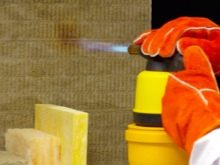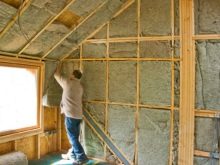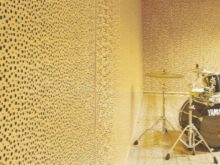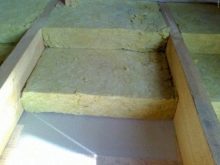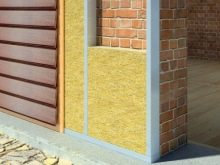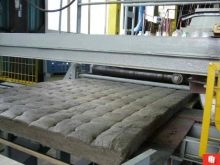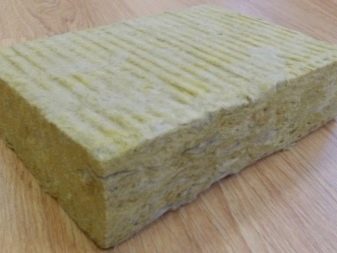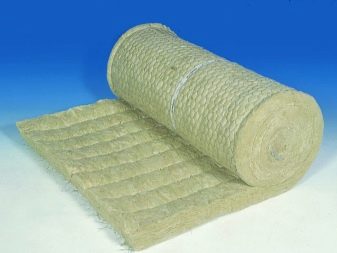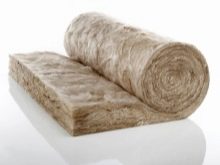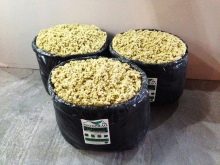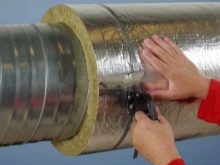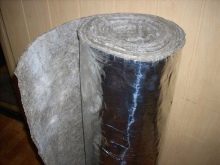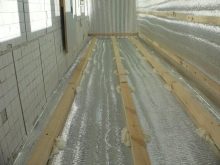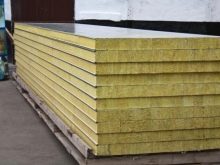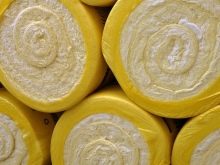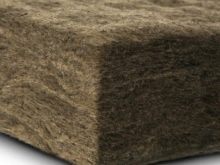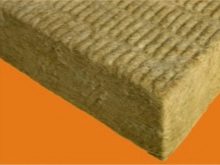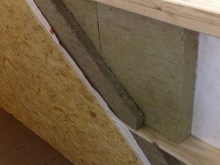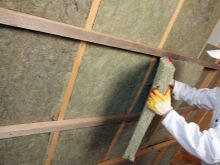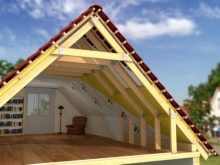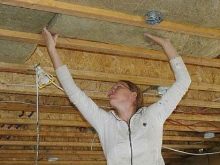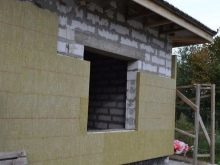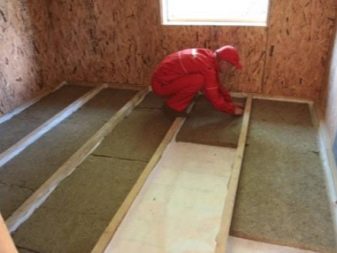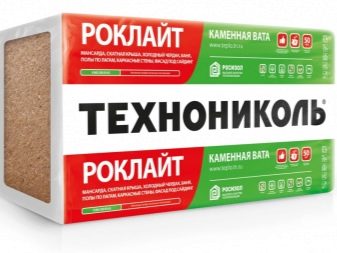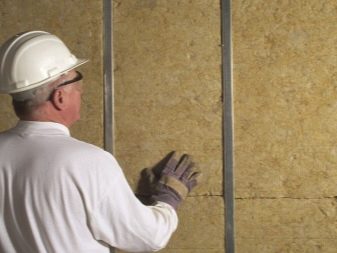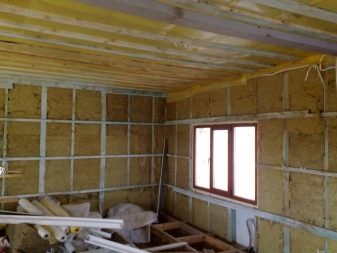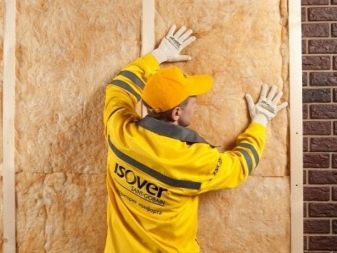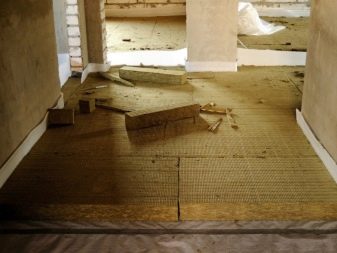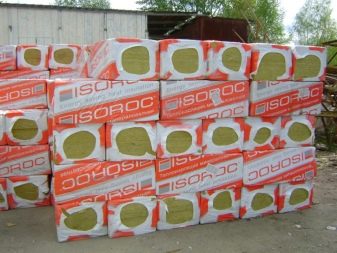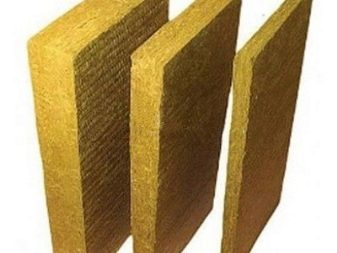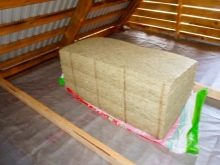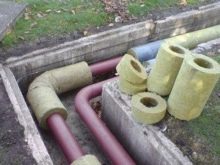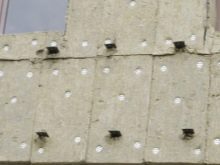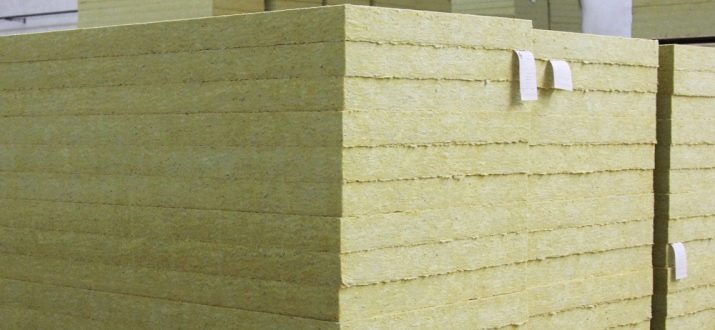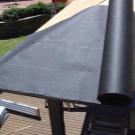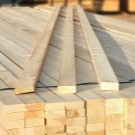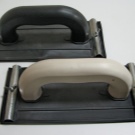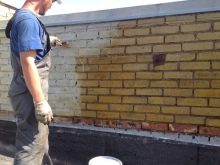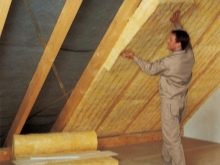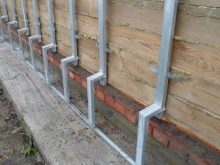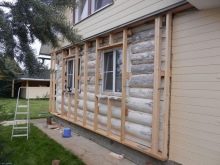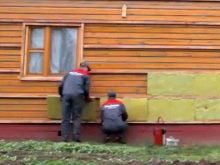Types of basalt heaters and technology of thermal insulation with their help
Basalt insulation is in its own way a unique material used in construction. The main advantage of the material is its origin - recycled rocks are used in production.
The technological process of processing raw materials allows you to get one of the safest types of insulation - basalt.
Material Features
Basalt insulation as a natural material is highly valued for effective energy saving, which is achieved due to a sufficient amount of air in its fibrous structure. Thus, the basis of insulation is, of course, created by an air cushion that protects against the penetration of cold into the room.Its second name is stone wool. The characteristic features of basalt material are usually considered together. This type of insulation has passed the test of time, permanently fixing its position among its peers in the construction market.
Basalt insulation has several main features.
- It does not lose heat, because it is characterized by low thermal conductivity. Basalt material does not consist of strictly oriented fibers. They are extremely chaotic, which affects the structure and characteristics of the material. There is a natural airbag. Due to the large number of ducts or interlayers between the stone fibers, a natural heat insulator is formed. The material at the base has a low thermal conductivity (in the range of 0.032 - 0.048 watts per 1 m per kelvin).
- According to some parameters, basalt insulation can be compared with a combined material from cork, foamed rubber, ordinary or extruded polystyrene foam. Modern insulation can also be compared with the different technical parameters of heat insulators. So, for comparison of similar indicators, you can take 10 cm of basalt insulation with a density of 100 kg per 1 m³ and a ceramic wall with a thickness of 117 cm.In order to comply with the required insulation parameters, the laying of a brick wall (clay brick) must be at least 160 cm thick.
- Does not absorb moisture. Another property of the material is hydrophobicity. When water enters the layer of insulation moisture does not penetrate inside, but remains on the surface, maintaining the insulating properties of the material. If we compare the insulation with mineral wool, it will be noticeable, as at the last the water gradually passes inside, leaving no chance. In such a heater thermal conductivity will be much higher. If you need to insulate a room with a high level of humidity, then you should not use, for example, glass wool, it is better to give preference to basalt insulation. Water in this case, as it were, flows around the fibers of the material, since the insulation is impregnated with special compounds (oils) during production.
- Does not interfere with steam transmission. Vapor permeability is an excellent material property, due to which basalt fibers become vapor permeable, regardless of density. The moisture contained in the air quietly passes through the warming layer, not allowing the condensate to linger.Vapor permeability is a significant criterion in the selection of material for warming a room with high humidity. The basalt layer does not get wet, which makes it possible to maintain the desired temperature for a comfortable stay in the room. The vapor permeability of basalt insulation is approximately 0.3 mg / (mch · Pa).
- Not afraid of fire due to its high fire resistance. Basalt material (basalt wool) meets the requirements of fire safety. Fibrous material refers to non-combustible substances. Moreover, modern high-quality basalt material is able to resist fire. In order for the melting point to come, the temperature must reach a mark of more than 1114 degrees. Therefore, it is often used to isolate various devices that operate at elevated temperatures. Basalt material belongs to the group NG in accordance with the classification of non-combustible materials. Thus, basalt wool is used in buildings of various types and designs as a heater and an insulator.
- Almost soundproof. Basalt insulation has such an equally important propertyas soundproof. The material provides a good level of sound insulation, if you remember its natural origin. Basalt wool may well mute sounds (vertical waves from the inner walls). This is a great way to isolate itself from extraneous sounds and neighboring noises. Sound waves are absorbed by the material, reducing reverberation.
- Lasting. The random arrangement inside the fibers in the structure of basalt insulation and part of the fibers of the vertical direction provide the material with a sufficient level of density. Due to this basalt insulation can withstand significant loads. Even 10 percent of the deformed surface has a compressive strength of 5–80 kilopascals. More specific indicators can be obtained depending on the complex conditions and taking into account the brand of material. The stronger the properties of basalt wool, the better its insulating qualities. Such material will serve for a long time, without changing in sizes and forms during the entire period of operation.
- Not active biologically and chemically. Basalt insulation is referred to materials with passive chemical activity.This is one of the main advantages of building material. It can be laid close to the metal surface without fear of rust. Insulation does not respond to aggressive biological environment. Basalt wool does not take decay and mold, so it can be said with confidence that this material is distinguished by a number of characteristics in terms of strength and resistance to external factors. Even such biological factors as the distribution of mice and rats will not affect the quality of the insulation, since they will not gnaw it. The material is boldly used to isolate various technical structures in difficult conditions.
Species
Dense basalt material with a fibrous structure has unsurpassed thermal insulation characteristics. Modern basalt insulation varies by type. Although the main difference of the material comes down to the type of fibers: continuous and staple fibers. The main parameter of staple fiber is the diameter.
It is taken into account when dividing materials into groups like:
- micro fine fibers - 0.6 microns;
- ultrafine fibers - 1.0 microns;
- super thin fiber - 1.3 microns;
- fine fibers - 9–15 microns;
- thickened fibers - 15–25 microns;
- coarse fibers - 50–500 microns.
When choosing a warming basalt material should pay attention to the thickness and length of the fiber, because many quality indicators of the product depend on it.
Basalt fiber insulation is also divided into soft, semi-rigid and more rigid options. There is always a basalt slab, cotton wool, plate or bulk insulation, rolled wall insulator, heat insulator in bags or mats. Specific differences relate to the surface - it is a foil or non-foiled product that is easily or difficult cut by a construction knife. In general, the considered insulation is divided into several types.
Foiled
Foil tiled insulation can significantly reduce heat loss. Today, houses are often hiding with folded mineral wool or basalt wool, which is suitable for most types of premises. And also this heater allows to save on additional shelter during the heating period. Building material significantly reduces heat loss.This is an excellent heat insulator, consisting of a double protective level, reflecting the heat inside the room.
Material with a foil-coated surface, besides heat-insulating properties, is distinguished by the ability of sound absorptionTherefore, it provides an additional level of environmental sound insulation. The lifetime of the insulation - up to 40 years and more. Basalt (folgirovanny) minvat is applicable both to internal, and to external finishing. It is used to avoid the possibility of decay, the formation of mold, as a hydro- and vapor barrier. It is applicable in non-residential and residential areas. The material is suitable for insulation of floors, walls and ceilings, as well as for covering the ventilation system, various tanks.
Mineral wool
The generic name mineral wool often implies the use of high quality mineral wool - this is the so-called stone wool, glass and slag. Increased strength is associated with the dense fiber structure of the material. For the production of basalt mineral wool used two types of rocks. In its composition there are no synthetic impurities. The natural origin adds positive qualities to the insulation.The finished construction material from basalt mineral wool is distinguished by its small thickness and minimal mutual friction of the fibers (prevents sound vibrations).
Inorganic product resistant to high temperature. Basalt wool is fire resistant, it is used for fire insulation. Non-combustible plates do not shrink. They do not change their original properties even over time. Slabs of basalt wool can be used to prevent moisture from condensing on the bearing walls of a building.
Minvat does not emit dust or various volatile compounds. Building material is considered one of the most efficient and environmentally friendly.
Stone wool
The use of basalt rock wool today is also widespread. Basalt fiber insulation is a special type of mineral wool. Gabbro-basalt rock is used as a raw material in production. Because of the natural origin of the building material is called stone or mineral. Although talking about a single product. Basalt is a mountain volcanic rockwhich is processed at the highest temperatures. Then, when separated, the product acquires its recognizable fiber.
Properties and specifications
Basalt-fiber insulation acts as the base insulation. When choosing a material, you should always look at its technical parameters and characteristics. Stone microfiber actually has a fossil structure, it is stable and retains heat for a long time due to the layer of natural ventilation. The material also allows you to protect the room from wind and moisture. If additional insulation is required, it is provided with ventilation gaps and a waterproof lining outside. Usually, one layer of insulation with a high density and medium size is sufficient. But insulation is often carried out with several layers of insulation with overlapping seams in order to improve the technical characteristics.
A special film is laid over the basalt mats, which additionally protects the basalt insulation 5 cm thick from condensate. When laying exterior insulation should be aware of the sensitivity of the material to the draft and enhanced winds.In this case, the effectiveness of thermal insulation material will not exceed 40 percent of the indicators that were originally. The main properties of high-quality insulation that does not require additional protection should be called their combination - this is acceptable thermal insulation, a stable level of diffusion of water vapor, sufficient resistance to fungal damage, long service life.
The thickness of the insulation layer of 15 cm is sufficient to provide the premises with a high level of insulation (thermal, hydro, noise insulation) with a film thickness of 20 mm, 30 mm or 100 mm.
When finishing walls and laying basalt insulation, it is worth considering that segments or mats do not adhere well to the surface of the wall. Primer in this case will not save the situation. It is better to use the nozzle for dowels. Practical use of basalt fiber insulation is recommended when laying the material on any surface. During installation, the material is usually cut into sections from 20 to 25 cm wide. Thus, the material will be able to maintain its strength and performance.
Initially, the material from natural materials has the necessary qualities to cover the walls inside and outside. In addition, the material is used for thermal insulation of chimney exhaust or stove pipes, sauna stoves, and their number does not play a role. In such cases, there is no need to fear high temperatures. It is worth considering that, depending on the brand, basalt mats, when laid on the ground, draw water from the contact surface. The latter should be treated with a hydrophobic composition with constant contact with moisture, so you should not use basalt wool to insulate the foundations, even if the material has high thermal conductivity, but the floors are quite possible and necessary. Basalt insulation perfectly resists shrinkage, because the structure of the material is tough, protective from rodents. Basalt slabs are purchased in packs of several pieces.
Minuses
Thermal insulation material of basalt fibers, as well as other types of building materials, in addition to positive properties, can also cause concern. Many do not know whether the basalt fiber is in itself any harm. It is worth to understand this in more detail. In the process of producing basalt fiber companies demonstrate the resistance of the insulation to fire.The test is carried out, for example, under the flame of a propane or acetylene torch. However, do not completely rely on the fire resistance of the material. With the house completely engulfed in fire, escape, relying on an insulator, will fail. Modern quality material is really able to block the path to the spread of fire, but this is a matter of time.
Another important point when choosing a natural insulation is that the material is still not without harmful qualities.
It is worth considering them too.
- Thermal insulation material in the process of moving, moving, laying or cutting can lead to the formation of dust, although by itself it does not leave dusty traces. The whole thing is in contact with other surfaces in the quality of production. In any case, when working with mineral materials, it is important to observe safety precautions: wear special glasses and gloves, work in a respirator.
- The material itself does not burn, but in case of severe fire or fire, the material emits gases (vapors and resins may be the result of glue base).
- Manufacturers of basalt insulation use auxiliary materials to increase the insulating properties - they use phenol-formaldehyde resins, the harmfulness of which is obvious to everyone.
There are more unpredictable consequences of the use of additional compounds in the production of stone fiber - this is the radiation background of the rock.
It is clear that we are talking about the places of extraction of raw materials, so it is useful to inquire exactly where the rock was mined, can there be compounds of heavy metals and isotopes in it. During processing, harmful substances are practically not destroyed. When choosing basalt mats, it is always necessary to monitor the quality of the product.
How to choose?
Any buyer of building materials is interested in the fact that the basalt heater has the necessary properties in the maximum amount, so it is selected for a set of reasons. Insulation, of course, must comply with modern technical requirements. Minvat is suitable as the main material for thermal insulation, but today it is better to buy basalt slabs.
When inspecting products, close attention is paid to the density of the material (D).
- Lightweight material - D up to 35 kg / m³ - suitable for light load structures. For example, for pitched roofing structures or in arranging attic and attic rooms.
- Slabs - D 35–50 kg / m³ - suitable for the construction of structures made of light alloys and noise insulation when designing the facades of low-rise buildings.
- Material - D 50–75 kg / m³ - designed for the finishing of floor surfaces and the ceiling, thick internal partitions. In addition, a layer of heat insulator is needed for arranging a three-layer wall structure in low-rise buildings (it represents the middle layer).
- D 75–100 kg / m³ - as a heat-insulating material used for finishing external walls or organizing ventilated facades. The high density of fibers allows the use of material for the installation of a two-layer insulation of external walls.
- Plates - D 125–150 kg / m³ - are necessary for the construction of soundproof partitions. The wall can be insulated under plaster.
- Basalt slabs - D 175 kg / m³ - are used as a layer of independent heat insulating material in the construction of partitions, walls, facades on the basis of reinforced concrete surfaces.
- Plates - D 175–200 kg / m³ - suitable for sound insulation of the floor under the screed.
Scope of application
Properties such as heat and noise insulation are inherent in a number of basalt fiber insulation with a structure of rigid fibers.Thermal insulation in the modern version according to the technology of laying tiled insulation is applicable to the design of walls, mansards, roofing structures, the facade of the building, pipes. Minvat (or basalt wool), plates and basalt rolls will be needed when installing heat insulating layers for processing different elements of buildings (wooden, brick, aerated concrete, concrete), for designing objects of complex configuration (using special equipment, for laying pipelines). Laying basalt cotton wool in wet areas, many builders resort to additional windproof, hydro and vapor barrier materials.
Basalt material is applicable for residential and non-residential buildings, many parameters depend on the manufacturer and brand of the product, for example, Basalit shows some of the best sales results in the construction market of modern heaters.
Mounting methods
In order to avoid heat loss at home, it is important not only to choose the material, but also the correct installation. Stone wool (as usual, builders call basalt insulation) suitable for covering the facade, walls or roof. Layers stacked in stages and sequentially.Professional skills here do not play a special role. The main thing is to carry out the installation of the plates, achieving an exact fit between the segments. Even a small construction experience and a creative approach to business will allow you to perform the entire range of installation work on the installation of basalt insulation precisely and on time.
In advance, you must purchase rolls or plates, as well as stock up on the following tools:
- insulation (basalt material, for example, in the form of plates);
- glassine;
- wooden slats;
- construction knife;
- grinding grater;
- polyurethane foam;
- nails and hammer.
Initially, it is necessary to seal the detected gaps, cracks and cracks on the treated surface. For this most often used construction foam. Although often the roughness is sealed with felt or tow as a cheap option. Further, waterproofing is done, a vapor barrier is laid down so that condensate does not remain on the insulation. For greater strength and improve the quality characteristics of the product provides natural ventilation. If the roof is insulated from inside the room, then a special film is used as a vapor barrier.
The gasket from the vapor barrier material provides natural ventilation of the space and retains water vapor. As a vapor barrier serves as glassine, foil or film. For fasteners used construction stapler. For example, if the waterproofing of the house is carried out under the roof, then the necessary barrier is obtained, which prevents moisture from penetrating inside the room. Installing the insulation layer is usually performed on rafters with a stapler.
Under a dense layer of basalt slabs, a crate is installed, which is made of thin wood slats. For fixing insulation material, in addition to a special stapler, screws, mastic and building glue are used.
It is necessary to consider the example of the roof, as is the installation of basalt insulation in the form of plates.
- First, a metal cornice is built on the house, it is fixed to the supporting wall with dowels. Due to the eaves, you can reduce the load of the insulation and at the same time protect the material from external influences.
- On the prepared eaves, the fixing of the insulation plates is carried out with the help of polymer cement glue for secure fixing to the base of the wall.The adhesive composition is neatly and evenly distributed over the entire surface of the basalt plate. Then the material is tightly pressed to the base of the wall (on the structure). It is better to mount the basalt material (plates) from the bottom to the top, moving from right to left. So uniformity of a covering is reached. Yes, and work so much more convenient. First, whole slabs are mounted, and then the remaining areas are covered with cut pieces of slabs.
- After the main work, the surface of the wall is leveled with a grinding trowel. This stage of work is necessary for the installation of a ventilated facade in the future.
The process of installing basalt insulation is not complex and energy intensive. Nevertheless, to obtain a result, it is necessary to follow all the advice on the choice of material in terms of density and size, the choice of tools and the nature of work. The technique of execution is quite simple here, so that even a beginner can handle it. At the same time, you should not forget that you can only maximize the quality of home insulation in winter.
Pros and cons of basalt wool - in the next video.
